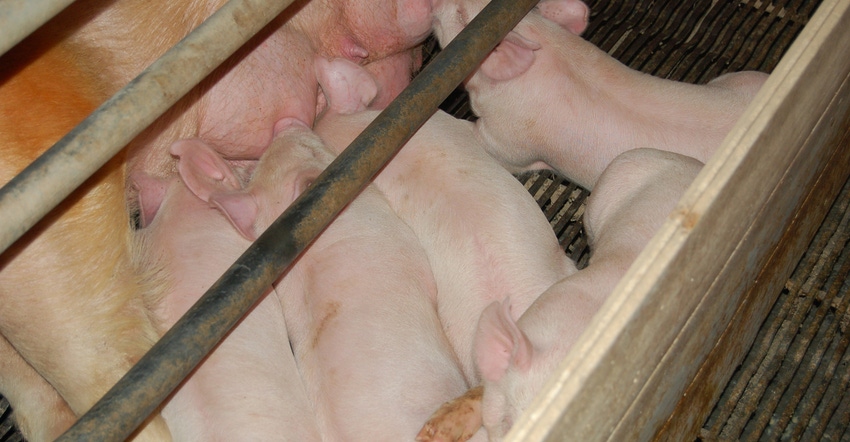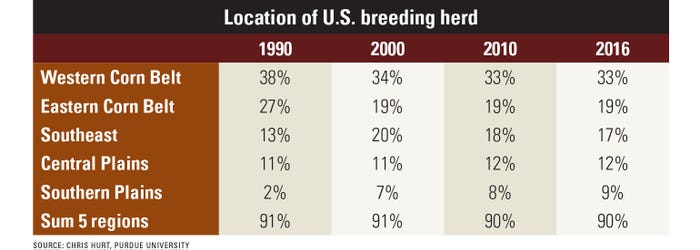January 31, 2017

The importance of the Midwest as a location for the nation’s swine breeding herd has declined, but that may be about to change. If we go back to 1990, the Midwest was the dominant location of the breeding herd. The western Corn Belt — defined as Minnesota, Iowa and Missouri — included 38% of the breeding herd, according to USDA inventory numbers.
The eastern Corn Belt — Wisconsin, Illinois, Indiana, Ohio and Michigan — contained 27% of the herd. So, 65% of the nation’s breeding herd was in these two regions.
That changed! Today those two Midwest regions contain only 52% of the breeding herd. The western Corn Belt has dropped from housing 38% of the U.S. swine breeding herd to 33%. The eastern Corn Belt's importance fell from 27% to 19%.
Shift to the South
The declining importance of the Midwest implies that other parts of the country have seen increasing importance. The first was the rapid increase in sow units in North Carolina in the Southeast in the 1990s and early 2000s. From 1990 to 2000, the Southeast increased its percentage of the nation’s breeding herd from 13% to 20%.
Concerns about environmental consequences of production methods in North Carolina and high animal concentrations in some counties led to a moratorium on new hog buildings. North Carolina and the Southeast region have seen a moderation in the portion of the breeding herd, dropping to 17% currently. The story of the Southeast is one of a surge from 1990 into the early 2000s, with some retreat in the past decade.
This leads to the second wave of the geographic sow migration, and that’s the growth of the breeding herd in the Southern Plains. In 1990, only 2% of the breeding herd was located there. Its importance began to rise in 1994, and has steadily increased since. Today, 9% of the breeding herd is in the Southern Plains.
Oklahoma is the state where this “sow action” primarily occurred. In 1990, that state had a breeding herd of only 35,000 head. Today, that number is 450,000 — an extraordinary increase of nearly 13 times.
The two waves of migration to the Southeast and the Southern Plains were largely driven by a move to an industrialized model with integrated production and processing centers. The integrated processing plant location was critical to where the “new” sows were located.
Future shifts?
Looking to the future, I predict that sow growth will tend to be in the location of new processing capacity. From 2016 to 2018, new pork processing capacity is being added to handle about 10 million animals, or roughly an 8% expansion.
The locations for that new capacity are in the Midwest in Missouri, Iowa, Minnesota and Michigan. Therefore, I anticipate that the Midwest region will recover some of its lost importance in terms of the national swine breeding herd in the next five years.
Hurt is a Purdue University Extension agricultural economist.

About the Author(s)
You May Also Like




